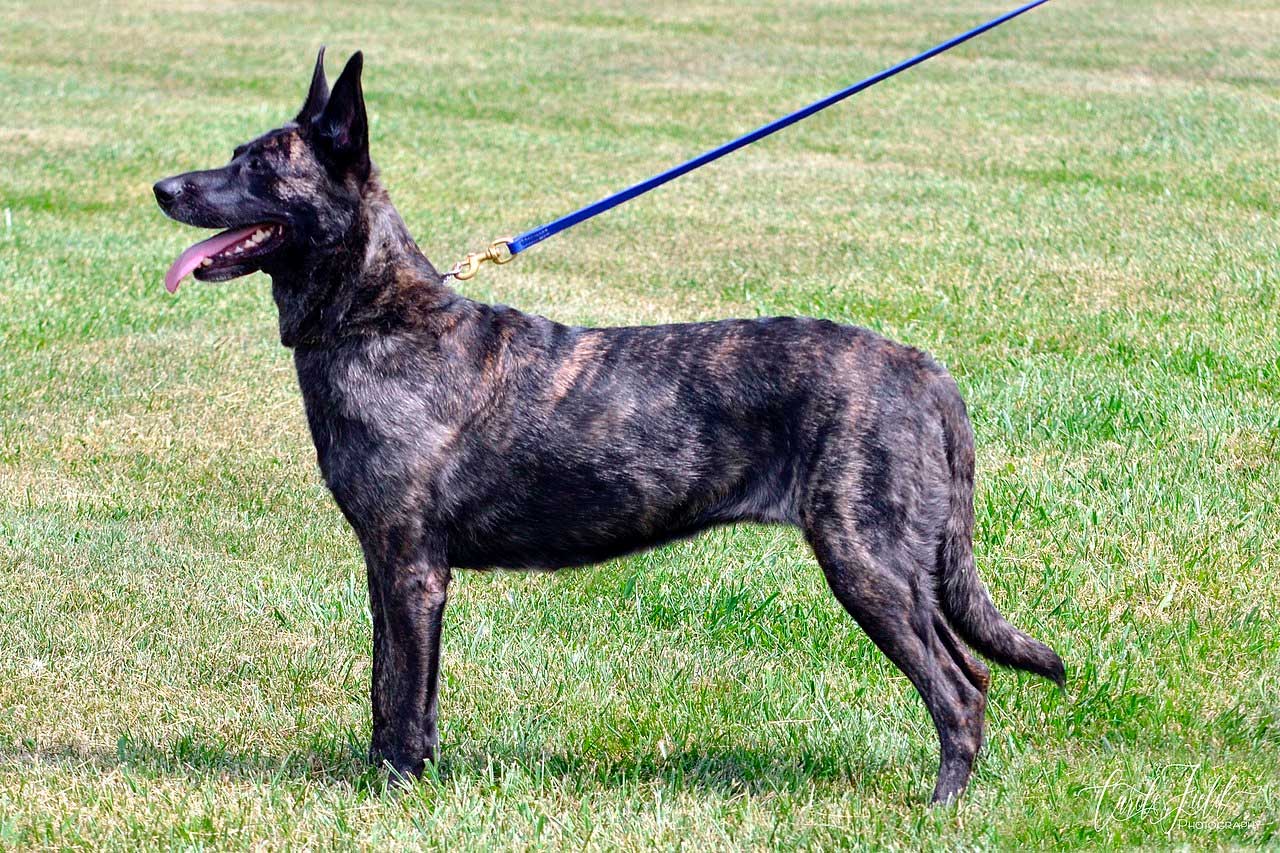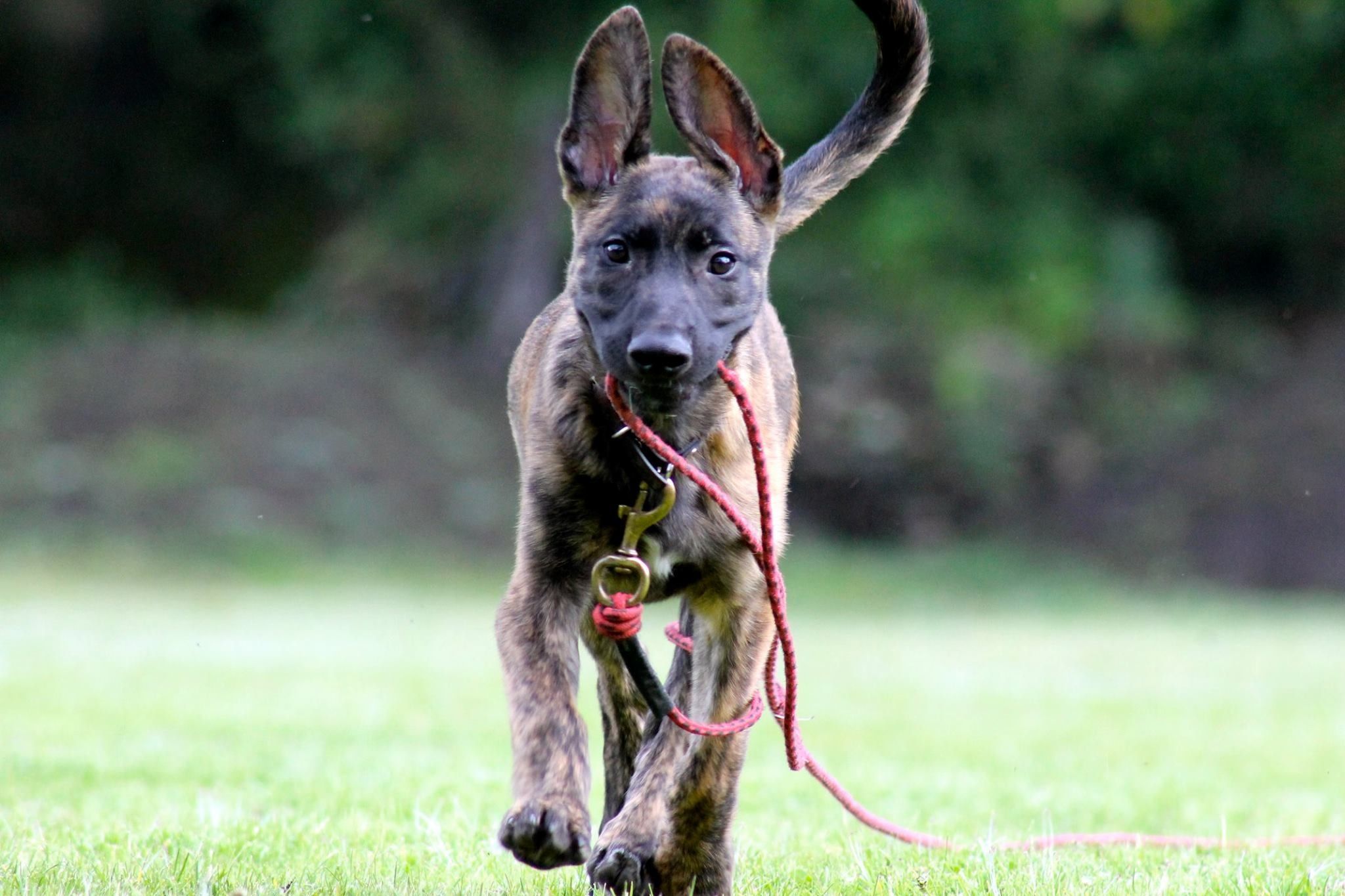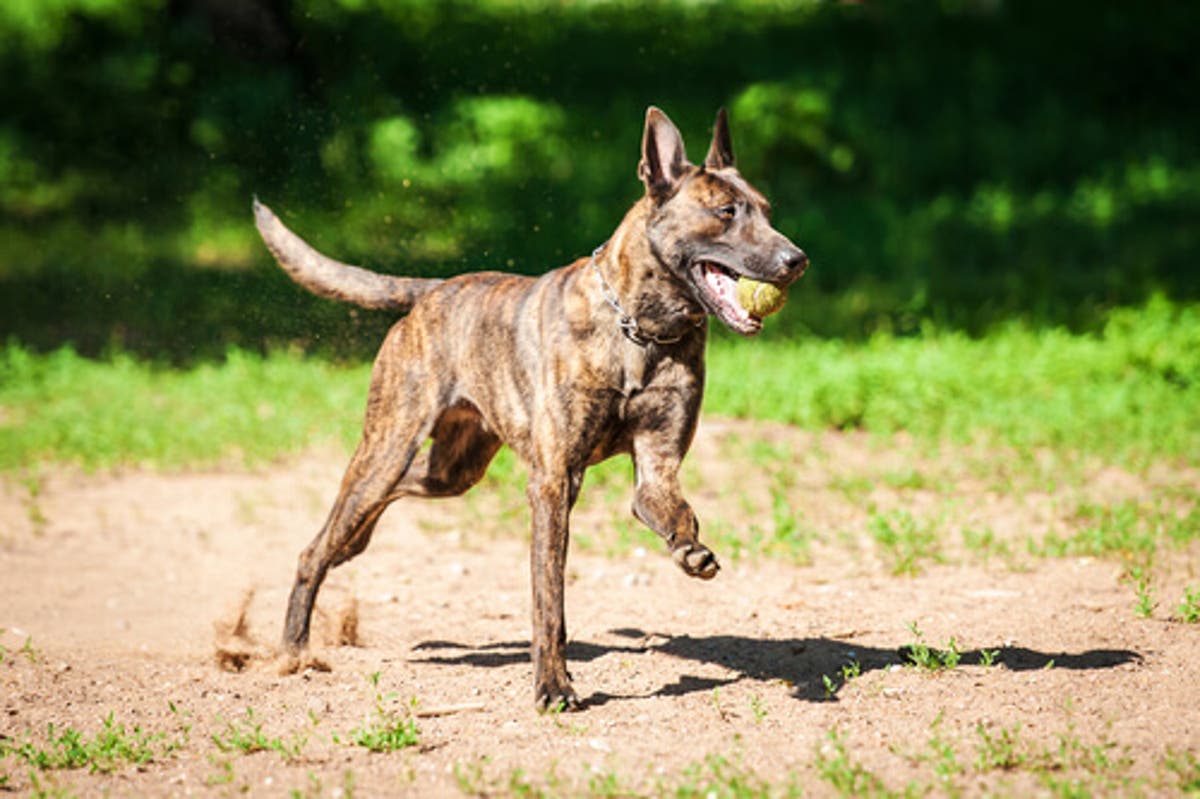The Dutch Shepherd is one of the strongest and most energetic dog breeds that can exist, at the same time it is a very loyal dog with its owner, and we can assure you that if you practice sports, this can be your ideal friend, since It is well known that these specimens possess unparalleled energy. If you want to learn much more about them, their characteristics, among other things, don't hesitate for a moment to continue reading this article.

dutch shepherd
This majestic breed of sheepdog, which comes from the Netherlands, can be classified as a medium-sized dog, quite muscular and with a very strong and well-proportioned body structure. These dogs tend to be extremely loyal, docile, very obedient, lively, it is also worth noting their great agility and ability to be shepherds. Taking this into account, this beautiful dog may be perfect for you, if you practice some kind of sport or are a very active person.
History
Historically, the Belgian Shepherd and the Dutch Shepherd are closely associated with common ancestors, which originate from the same region of the world, but these would be completely separated at the time of the founding of the Belgian state, which was in the year 1830. Around the extension of the Netherlands there have always been shepherd dogs which came from central Europe.
It is hinted that the breed called the Schipperke shares the same ancestors as the Belgian Shepherd and the Dutch Shepherd, even though the breeding lines of these two Shepherds must have split much earlier than that of the Schipperke, most likely between them. the Middle Ages or in the Renaissance, since the standard of this dog was defined and it was finished inscribing already in the year 1889.
These breeds also came to share fairly close origins with the original German Shepherd. Until about the XNUMXth century, the herding dogs from the Netherlands had a much more robust build than today's herders, this was because these same dogs were the protectors of the herds against the stalking wolves.
As of this same century, the wolf is practically ruined throughout Europe, this itself has the consequence that it is no longer necessary to use dogs as large and ferocious as these shepherds are; With the passing of the years, a breed of shepherds begins to form which is much more intelligent and effective when carrying out all its tasks and also, much lighter and thinner than its ancestors.
The Dutch shepherds generally performed a wide variety of tasks or jobs such as herding flocks of sheep, their job was to watch that the sheep did not feed on cultivated fields of different cereals, they also watched and herded the cows, finally, They also pulled the small cars in which the ranchers traveled to sell different dairy products and to offer their products in the nearby markets.
In ancient times, Dutch shepherds were selected primarily following different criteria on their functionality and effectiveness when performing tasks and working, without taking into account the beauty that they could have, for this reason there was not a very exact physical description About these dogs. Over the years, this changed completely, since in the year 1898 all the standards of this beautiful breed were set.
According to the FCI, the International Cinological Federation, this breed was not recognized until 1960. The Dutch Shepherds are a very little commercialized breed and not well known outside this region of Europe, the Netherlands, being the exception in many bodies of security and in many armies throughout the world; these shepherds often compete and, at the same time, be confused with Belgian shepherds, brindle dogs and even wolves.
Varieties
There are different varieties within this beautiful and majestic breed, these same varieties can be classified by their coat or its color, within these we can find:
Short hair
Coat: The coat of this variety is considerably harsh, however, not too harsh; In turn, it has quite short hair around its entire body, with some abundant fluff. On the tail, neck and upper legs there is usually much more hair.
Color: The color of these shepherds is notably brindle, a pattern which is on top of their base color which is brown, or even a gray color. This entire brindle pattern can extend around his entire body, which also includes his neck, legs, and tail. It should be noted that this variety has a kind of black hair mask over the entire length of its body.
Long Hair
Hair: Its fur covers all corners of its body, it is quite long, smooth and close to its body, in addition, with an extremely rough touch: this variety also has a very abundant internal fleece and does not have any type of undulation or curl. The entire area of its head, legs, ears, and hind limbs are fully covered with dense fur. These shepherds have areas of their fur that are called "feathers" because of their great resemblance to them and their length. Finally, we must point out that in this case the tail is completely covered with abundant fur.
Colour: As in the short-haired variety, long-haired Dutch Shepherds have the same color and patterns.
Hard coat
Hair: In this case we can clearly see a layer of hair, which is very dense, hard, and also very abundant; The exception to this is on its entire head, where we can see an internal fleece that is quite dense. The coat of this variety will always be very thick. The lips of its snout are completely covered with abundant fur, this is regularly called a goatee or mustache, this is not soft at all and is well separated.
In turn, they have very prominent eyebrows, with extremely rough hair. The hair of this variety is much less developed in the areas of its cheeks and around its entire head. The tail of these is completely covered in a uniform way; Also, unlike the other varieties, they have little fur on their legs.
Color: The most common colors within this variety are grayish blue and a whitish color with black tones; in turn, they present a brindle which can be golden or silver. In these specimens, their brindle is much less evident in their outer layer of hair, unlike the other two varieties mentioned above.
Description of the Dutch Shepherd
Since the International Cinological Federation recognized these beautiful Dutch shepherds in 1960, a fairly clear description of them was placed, within this precise description we can find the following characteristics:
Skull
- They have a fairly flattened skull.
- In turn, its stop is very little marked
Face
- Nose: In the nose area we will always find that it will be black
- Snout: The Dutch Shepherd's snout is considerably longer than its skull. His nasal bridge is completely straight and also parallel to the top line of his skull.
- Lips: Her lips are fully attached
- Bite: The bite of these shepherds is extremely strong and has a regular development. When its snout is closed, the incisors in its upper jaw overlap the incisors in the lower part, this is called "scissor bite"
- Eyes: They will always be of a fairly dark color, with a medium size, they will also be almond-shaped and not round. It should also be noted that they are always in a slightly crooked position
- Ears: The ears of Dutch Shepherds are usually rather small than large. When they are in a state of excitement, these dogs fully erect their ears and point them forward. These are quite high implanted and not spoon-shaped, as is normal in some breeds of dogs. Many small puppies of this breed, which are in a cage, can have small blood sacs in their ears, since they are usually hit with the bars of the cage. This returns to normal with surgery or by draining the small sacs.
Neck
The most desired thing is that this neck is not too short, also that it is thin, without any jowls and finally a gradual transition to the upper part of the rest of his body.
The Body
- Back: These shepherds have a fairly short back, very strong, but also completely straight.
- Loin: Its loin is of a good size, it can be classified as a medium size; and it is also quite strong and not at all narrow
- Chest: They have a fairly deep chest but, however, it is not narrow at all. The bottom line that is on your rib cage continues progressively down to the line of your belly.
- Ribs: These are medium in size and notably sprung.
- Tail: The tail of the Dutch Shepherd reaches up to the tibial-tarsal joint. While they are at rest they keep their tails quite straight or, at any rate, hanging down. While these beautiful dogs are walking they carry their tail in an extremely elegant way and will never carry it to the sides in a ring shape.
Pins
In its legs you can clearly see how its fingers are extremely close to each other and also remarkably arched. This itself prevents its leg from being too long. Also, their nails are completely black, they have very elastic pads and are quite dark in color.
Size
These beautiful Dutch Shepherds are dogs that can be classified as medium-sized dogs. They also have a regular weight of about 30 kilograms. In turn, the average height in females tends to be between 55 and 60 centimeters, and in the case of males it is a little more, approximately between 57 and 62 centimeters. Taking this into account, it can be seen that there is no very noticeable difference between the two sexes.
Failures
Taking into account all these criteria and the description of this breed, any type of deviation or change in any of these criteria can be defined as a fault, and the importance of this fault depends on its severity. The most common faults in Dutch Shepherds are:
- Nose of any color other than dark black
- The presence of some mandibular deformation in the lower or upper part, this same deformation is medically known as prognathism
- Their ears are very floppy, spoon-shaped, or may even be droopy
- A tail that is curled
- Very large white spots on its chest and legs; including also any type of white line or spot on other parts of your body
- The presence of colors and spots that do not correspond to its description, too much black outer fur
- That his ears or his tail are cut off
Character
Due to all their past and the beginning of their history, these Dutch Shepherds since ancient times have been characterized mainly by being an extremely active breed of dog, which requires a lot of exercise. All these characteristics of them indicate that they are dogs with an energy that will never end, if you are a very active person or who is dedicated to exercise, the Dutch Shepherd will become your best friend, because this breed has come to be classified like hyperactive dogs.
Despite this, if you manage to get along with your Dutch Shepherd, rest assured that you will have one of the most docile, faithful and quite affectionate dog breeds; At the same time, he is very attentive to the needs of his human family and learns orders very quickly. It should be noted that this breed of dog tends to be quite affectionate with its family, including children and the elderly, in addition, they socialize extremely well with other dogs, since throughout their history they have constantly lived with other types of animals.
"Salud"
Dutch Shepherds are quite rustic dogs that usually live between 12 and 14 years. It is a particularly healthy breed, since the beginning of its history they have been bred to carry out different jobs and not for beauty, thanks to this, these shepherds do not suffer the same as the German shepherd.
However, we must be very careful that our dog does not suffer from hip dysplasia, which is a fairly common condition in very large or giant breeds, despite this, it is not usually something too common in Dutch Shepherds. In the same way, the most advisable thing is not to force the puppies of this breed at all, since they can present problems over the years.
If you want to learn much more about dogs and other types of animals in the world, do not hesitate to continue reading these articles:


